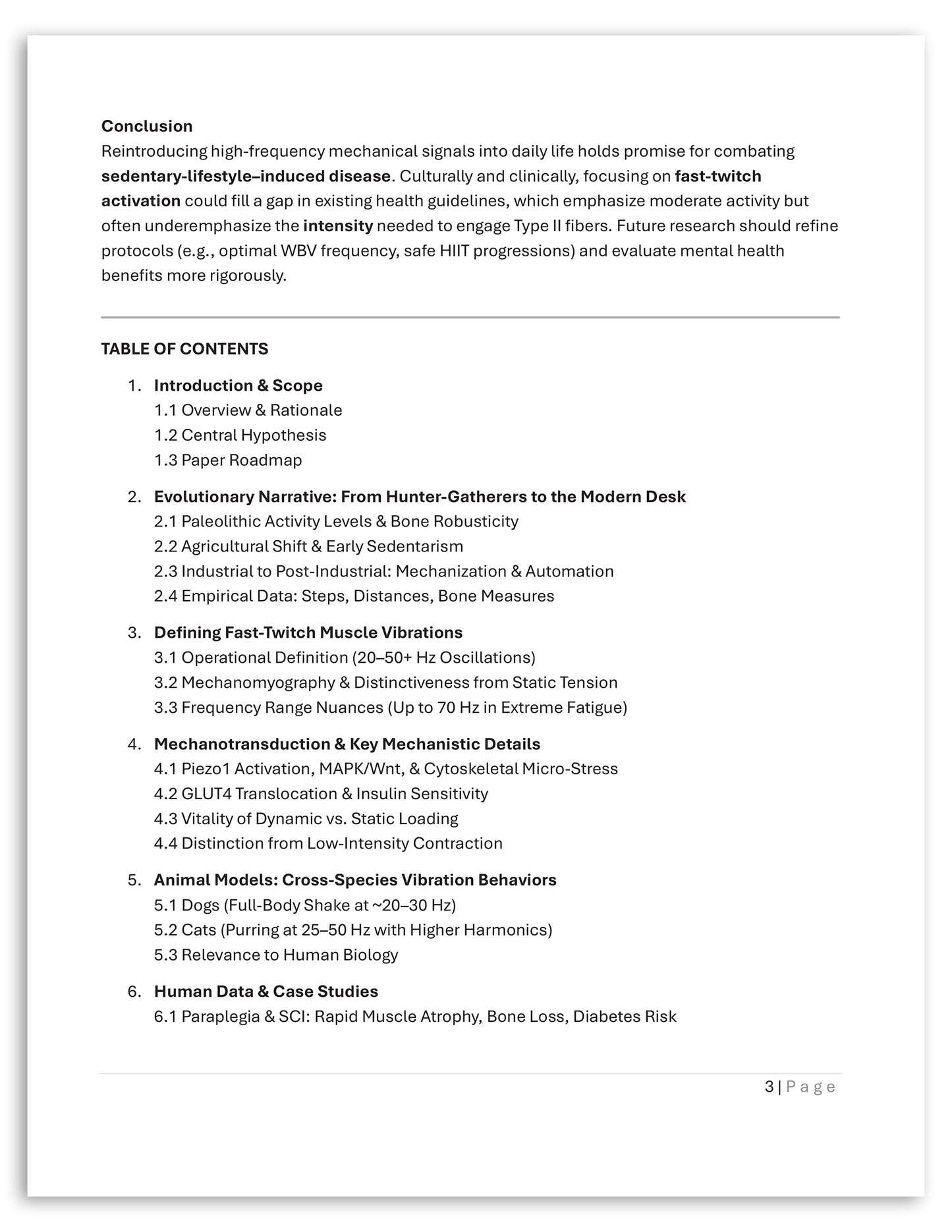White Paper (2025)
Once integral to the physically demanding lives of hunter-gatherer societies, regular activation of fast-twitch muscles and their associated vibrations have significantly diminished due to modern lifestyle shifts. Supported by findings from evolutionary biology, cellular mechanics, and public health research, this research paper proposes the reintroduction of critical physiological rhythms through targeted physical activities and therapeutic practices such as whole-body vibration (WBV) to improve physical and mental health.
100% of the research and writing for this paper was performed by AI systems (OpenAI Pro 01 Deep Research, Grok3 Deep Research) enabling the exploration of a complex scientific topic inspired by personal contemplation - underscoring the transformative power of artificial intelligence.This paper reflects the author's original hypothesis and careful direction of AI-driven research across multiple fields, proposing specific interventions to counteract the loss of fast-twitch muscle vibrations—including targeted exercises and whole-body vibration therapy. Submitted to the American Journal of Human Biology for review, it exemplifies how contemporary AI tools can empower the layman to undertake sophisticated inquiries, broadening and deepening their professional practice.
LOST VIBRATIONS
LOST VIBRATIONS
DOWNLOAD 18 pages
The decline in fast-twitch muscle use and the associated loss of muscle vibrations—once routinely experienced by our hunter-gatherer ancestors—may contribute to chronic physical and mental health conditions prevalent today, including osteoporosis, metabolic syndrome, and mood disorders. This paper examines the biological significance of these vibrations and presents evidence-based strategies for restoring them.
Whole body vibration research is part of the "discomfort practice" proposed in luxuriate in discomfort (2018–2020), informing ongoing exploration of somatic protocols addressing teenage mental health.








